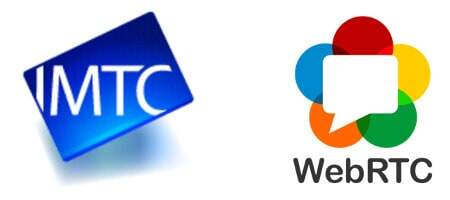Where is the IMTC focusing it efforts when it comes to WebRTC?
[Bernard Aboba, who is IMTC Director and Principal Architect for Microsoft wanted to clarify a bit what the IMTC is doing in the WebRTC Activity Group. I was happy to give him this floor, clarifying a bit the tweet I shared in an earlier post]

One of the IMTC’s core missions is to enhance interoperability in multimedia communications, with real-time video communications having been a focus of the organization since its inception. With IMTC’s membership including many companies within the video industry, IMTC has over the years dealt with a wide range of video interoperability issues, from simple 1:1 video scenarios to telepresence use cases involving multiple participants, each with multiple cameras and screens.
With WebRTC browsers now adding support for H.264/AVC as well as VP9, and support for advanced video functionality such as simulcast and scalable video coding (SVC) becoming available, the need for WebRTC video protocol and API interoperability testing has grown, particularly in scenarios implemented by video conferencing applications. As a result, the IMTC’s WebRTC Activity Group has been working to further interoperability testing between WebRTC browsers.
In the past, the IMTC has sponsored development of test suites, including a test suite for SIP over IPv6, and most recently a tool for testing interoperability of HEVC/H.265 scalable video coding. For SuperOp 2016, the WebRTC AG took on testing of WebRTC audio and video interoperability. So a logical next step was to work on development of automated WebRTC interoperability tests. Challenges include:
- Developing basic audio and video tests that can run on all browsers without rewriting the test code for each new browser to be supported.
- Developing tests covering not only basic use cases (e.g. peer-to-peer audio/video), but also advanced use cases requiring a central conferencing server (e.g. conferencing scenarios involving multiple participants, simulcast, scalable video coding, screen sharing, etc.)
For its initial work, IMTC decided to focus on the first problem. To enable interoperability testing of the VP9 and H.264/AVC implementations now available in browsers, the IMTC supported Philipp Hancke (known to the community as “fippo”) in enhancing automated WebRTC interoperability tests, now available at https://github.com/fippo/testbed. Sample code used in the automated tests is available at https://github.com/webrtc/samples.
The interoperability tests depend on adapter.js, a Javascript “shim” library originally developed by the Chrome team to enable tests to be run on Chrome and Firefox. Support for VP9 and H.264/AVC has been rolled into adapter.js 2.0, as well as support for Edge (first added by fippo in October 2015). The testbed also depends on a merged fix (not yet released) in version 2.0.2. The latest adapter.js release as well as ongoing fixes is available at https://github.com/webrtc/adapter.
With the enhancements rolled into adapter.js 2.0, the shim library enables WebRTC developers to ship audio and video applications running across browsers using a single code base. At ClueCon 2016, Anthony Minessale of Freeswitch demonstrated the Verto client written to the WebRTC 1.0 API supporting audio and video interoperability between Chrome, Firefox and Edge.
–
Got questions or want to learn more about the IMTC and its involvement with WebRTC? Email the IMTC directly.

I did indeed find the previous state of testing (apprtc where chrome controls firefox) a bit sad…